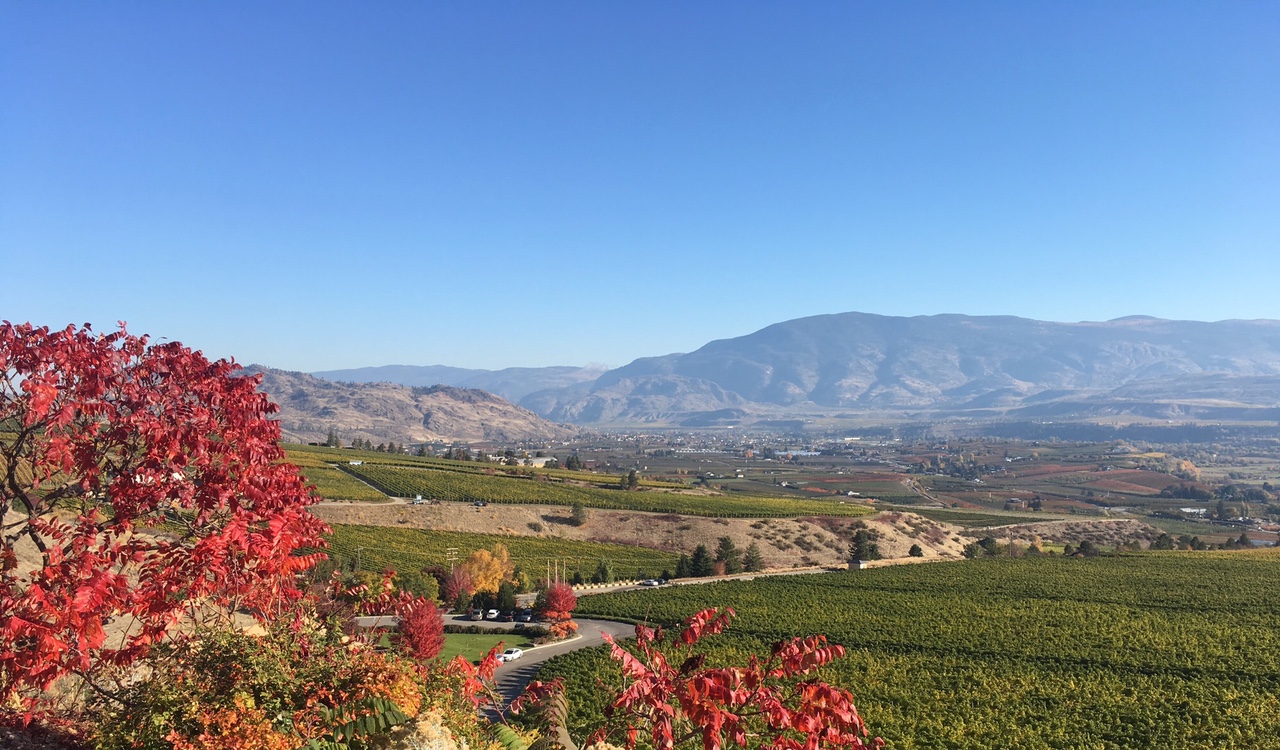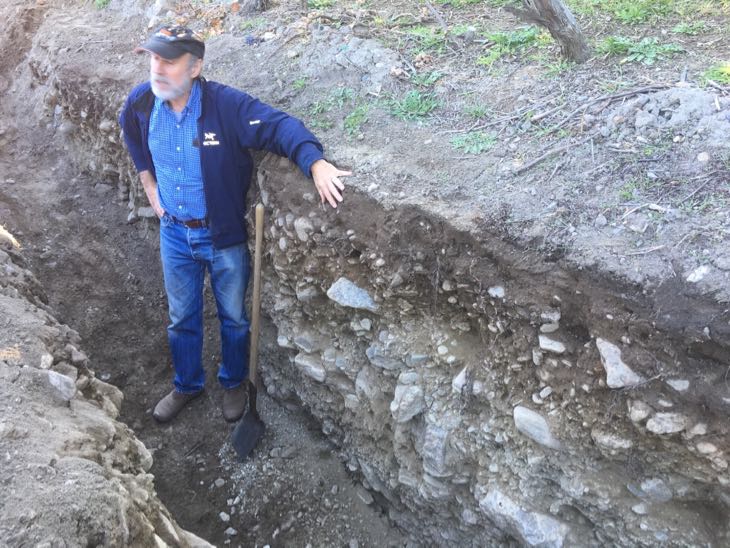
Wine Culture Magazine

The Golden Mile Bench as seen from Hester Creek, showing the sub-GI’s alluvial fan. Tim Pawsey photo
Almost lost in the shuffle of the pandemic, B.C.’s more specifically defined wine map continues to evolve. Considering that the province’s very first sub-Geographic Indicator was formalized just six years ago, the process is moving along at a respectable pace. Golden Mile Bench was confirmed in 2015, followed by Okanagan Falls, Naramata Bench, Skaha Bench, the Cowichan Valley and Golden Mile Slopes. The latter comprises the area below the alluvial fans not included in Golden Mile Bench. Those soils were identified as being distinct from the upper bench soils during the original Golden Mile Bench study.
Currently under development under the auspices of BC Wine Authority are proposals for sub-GIs in East Kelowna Slopes, South Kelowna Slopes and Lake Country. The latter is now being voted on with a result expected shortly.
“All these proposed sub-GIs need to be presented and approved by the Minister of Agriculture. The sub-GIs are not official until the government amends the Wines of Marked Quality Regulations,” advises Scott Hennenfent, BCWA General Manager. (Full details of all sub-GI proposals in process and completed are available at http://www.bcvqa.ca/media/.)

Soil specialist Scott Smith is a key player in determining B.C.’s sub-GIs. Supplied photo
Soil specialist Scott Smith is a key player in the sub-GI exercise. It’s his work to document and analyse soils throughout the region and how they play into any discussion of distinct terroir. His final report defines the boundaries within a final proposal on which wineries and growers must vote—and approve by a two-thirds majority.
Smith points out that the “glacial landscape” that helps define the Okanagan Valley is composed of transported sediments. He suggests, combined with fundamentals of climate, it’s soil types that ultimately define any specific terroir to be considered as a sub-GI. However, he notes, there’s also “an element of pragmatism’ required.
Interestingly, what might start out as a simple exercise may not always unfold as people expect. The Kelowna benches proposal, which started out as a single entity, also proved a challenge because the region has considerable residential development in the middle. This effectively created an island between the two areas, explains noted winemaker Ann Sperling, whose family has farmed Sperling Vineyards over four generations.
However, there was enough soil variation in underlying formations and climatic differences to make them distinct, so this was the ultimate path forward. “They’re not equal in size but they are in status,” Sperling says.
“It’s fascinating that Kelowna has some of the oldest and continuously planted vineyards in the Okanagan,” she adds. “But it’s not what people recognize, stylistically, as Okanagan grape varieties. For instance, I’ve always felt weird calling our single-vineyard wines ‘Okanagan Valley.’ It will be nice to be able to have a definition and name—and to be able to communicate that. And I think there are enough people who are engaged and want that kind of detail.”
Rhys Pender MW suggests the true value of sub-GIs will become apparent gradually.
“I am hoping that as we draw these lines in the dirt to make meaningful, science-based, delimited smaller wine regions, we will then start to be able to see which areas specialize in which style of wine. Over time it would make sense for the most successful grapes and styles to be focused on and then, given time, we will see the best reflection of each terroir in the wines,” says Pender, who is both a wine educator and owner of Little Farm Winery in the Similkameen Valley.
“Right now many wineries and growers might have, say, 10 acres and want to plant a bit of everything to make different styles of wine from Riesling to Pinot Noir, Cabernet Sauvignon and Syrah. But will all those varieties really all make high quality on the same site? Probably not. So it makes sense to specialize once we figure out what a sub-GI does best.”
Initially, says Noble Ridge CEO Leslie d’Andrea, the idea of a sub-GI might have seemed “geeky” except for those who wanted to know for technical reasons why a wine from one sub-GI might be different from a wine from another. However, a couple of years after the Okanagan Falls sub-GI was approved, the reality has proved very much otherwise.
“It’s drawn our attention just how important exactly where we are is to the wine we’re making. As a result, we’re doing some things differently, including upping our game in terms of our sustainability practices,” says d’Andrea, who also is quick to credit Sustainable Wine Growing BC for its new initiative. “What’s more, we decided we’re in a unique area, so we should maximize that to our full advantage of what this place can do that no other can. It’s very exciting for us.”
She adds: “In the end, it’s the work with the sub-GI that has really focused our attention on our land.”

Tim Pawsey writes and shoots at hiredbelly.com as well as for publications including Quench, TASTE and Montecristo. He’s a frequent wine judge and is a founding member of the B.C. Hospitality Foundation.

Tim Pawsey writes and shoots at hiredbelly.com as well as for publications including Quench, TASTE and Montecristo. He’s a frequent wine judge and is a founding member of the B.C. Hospitality Foundation.
Copyright © 2025 - All Rights Reserved Vitis Magazine